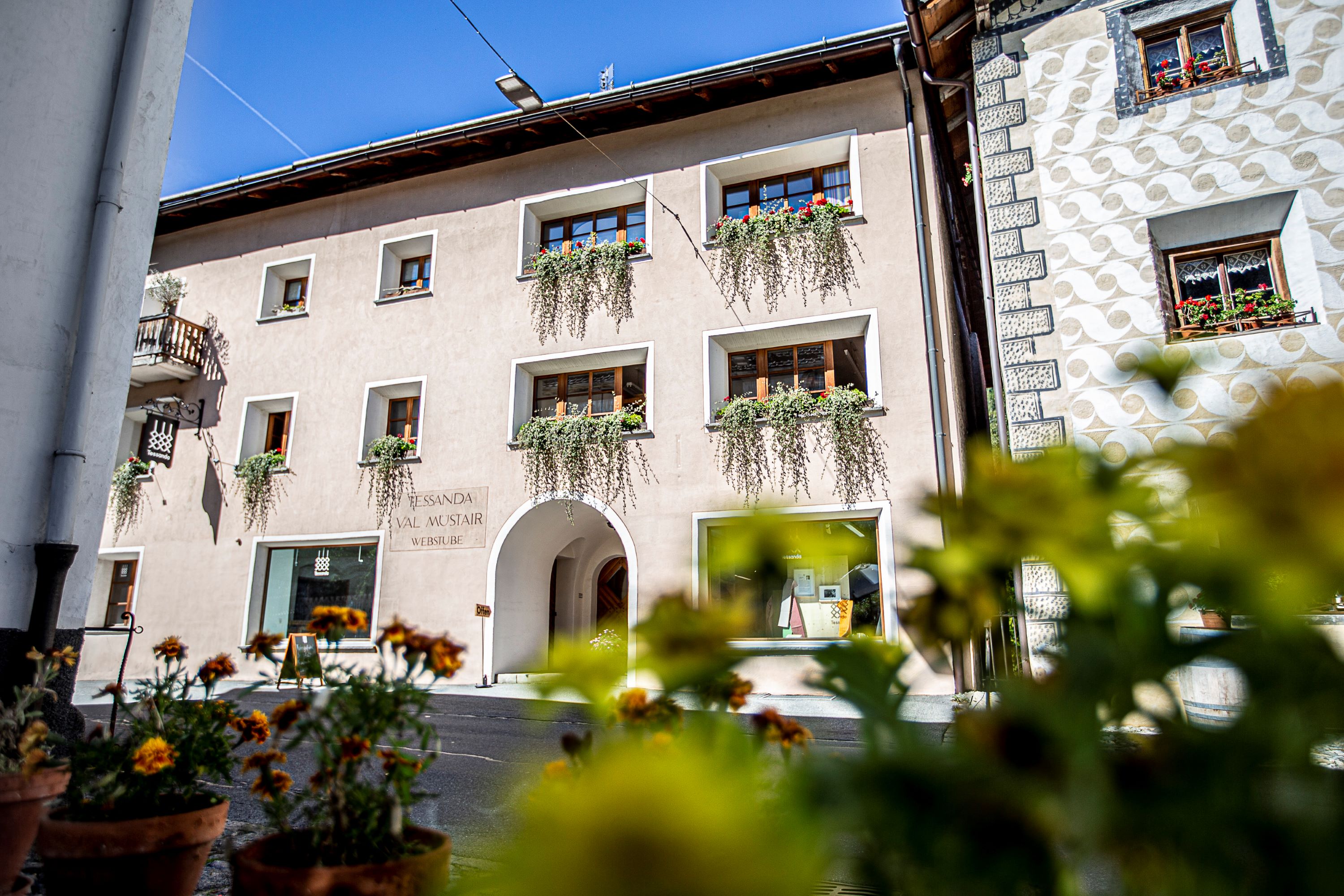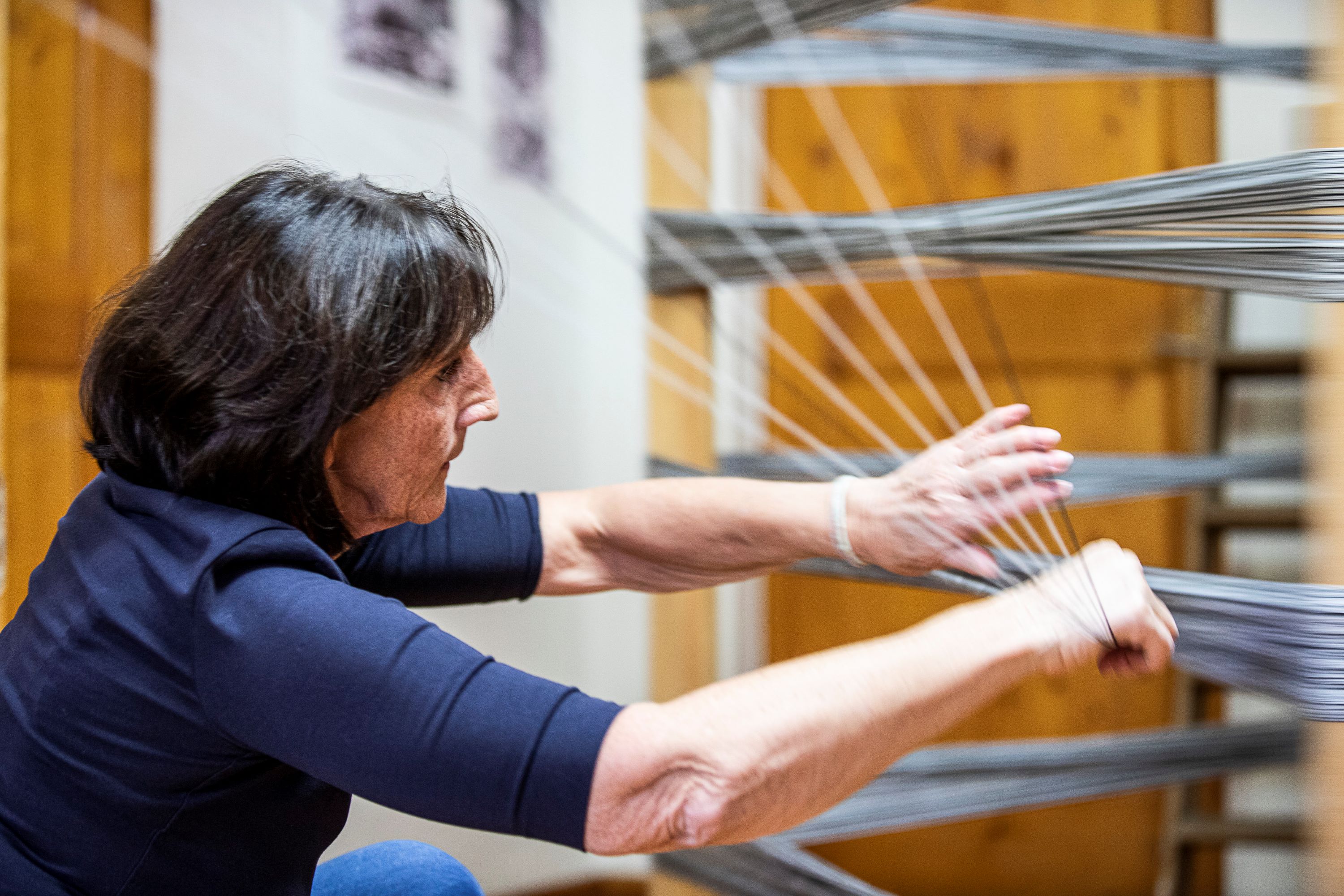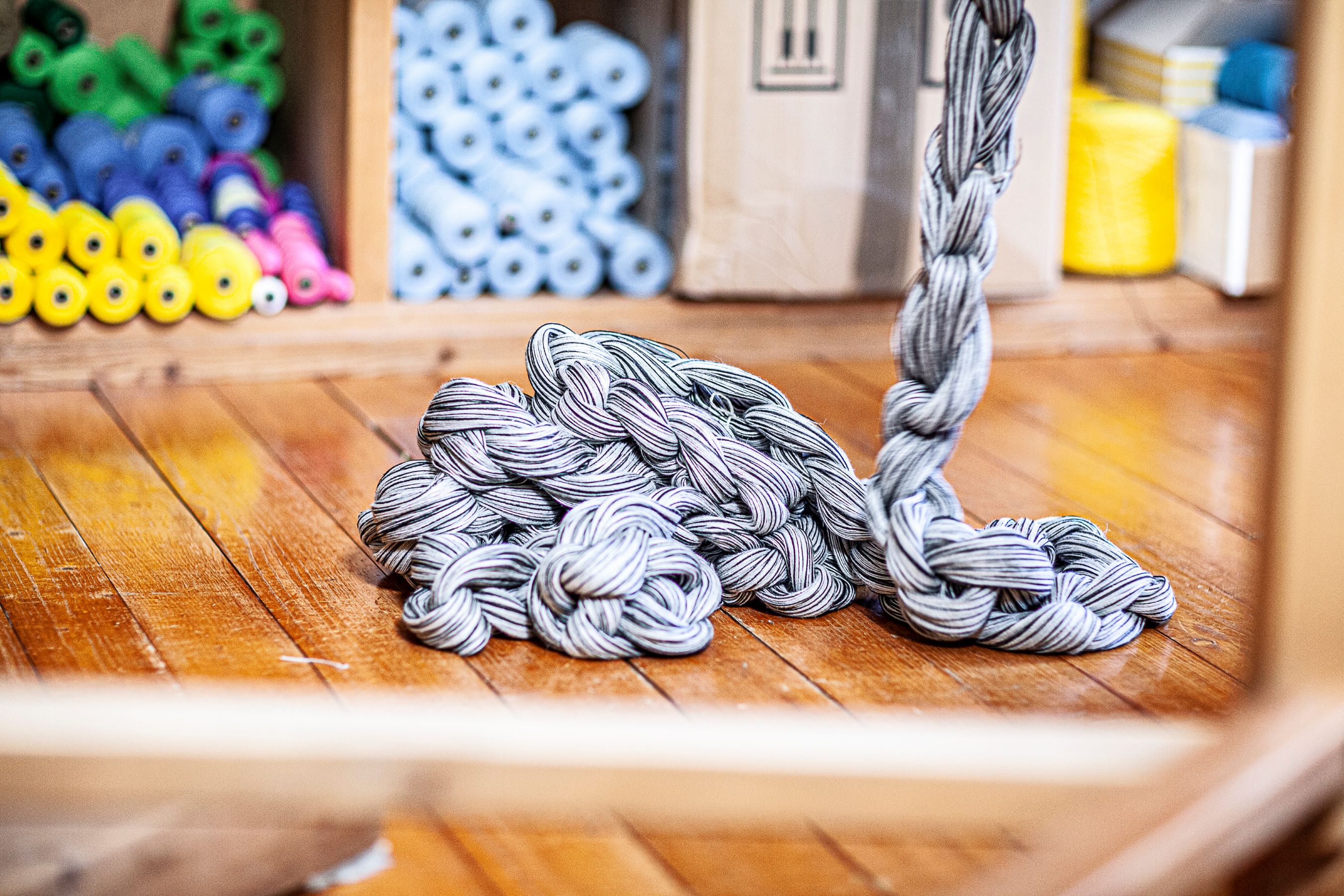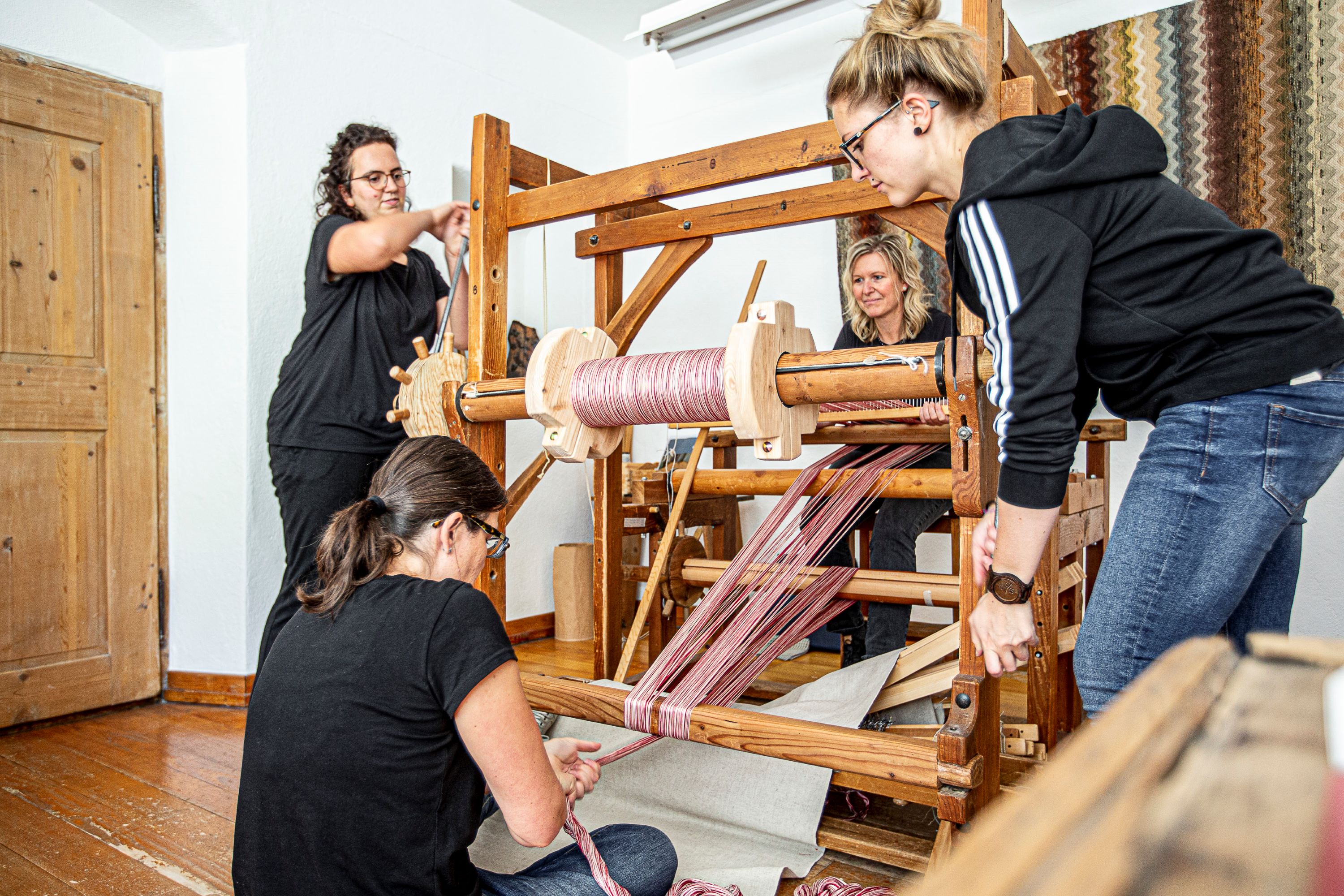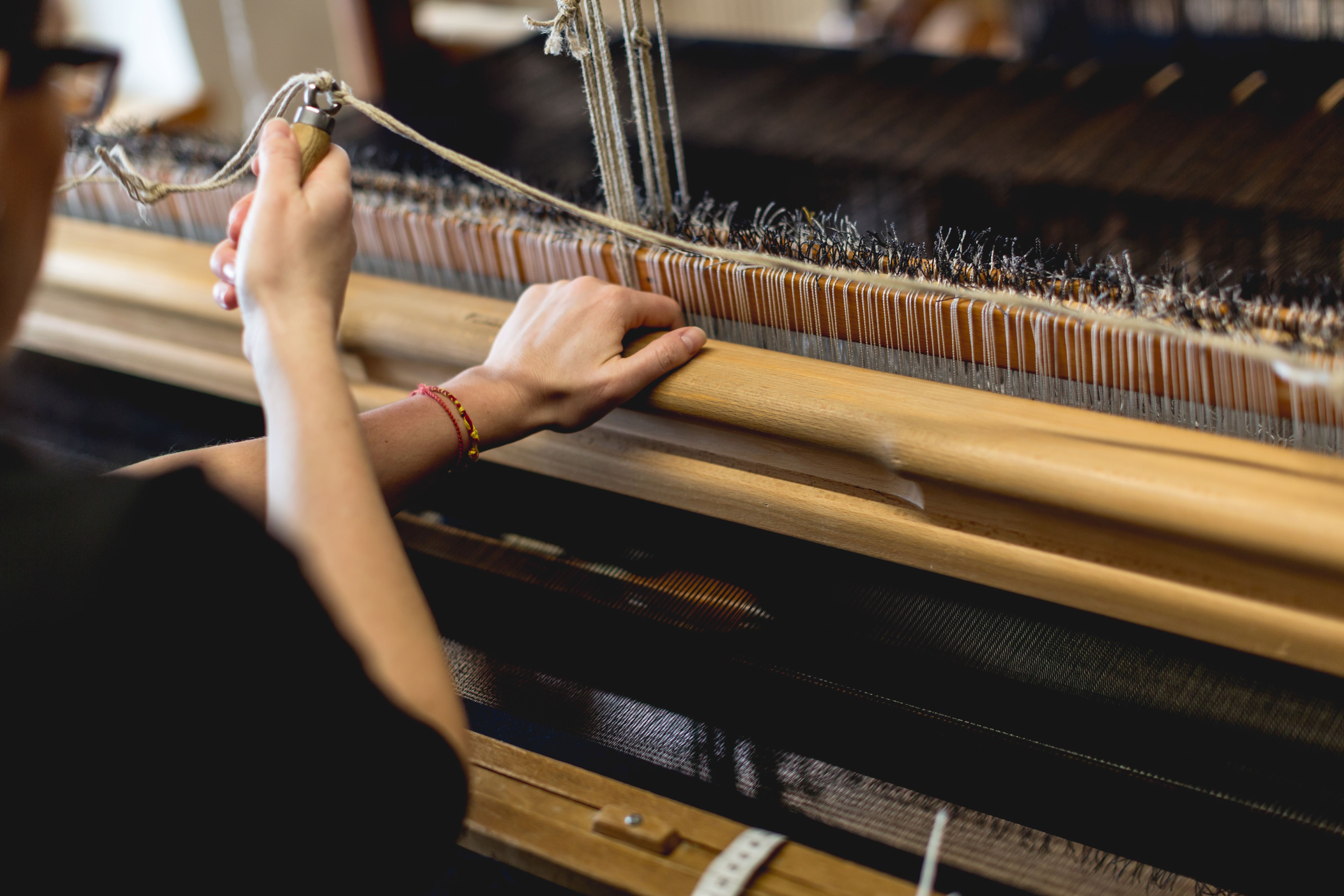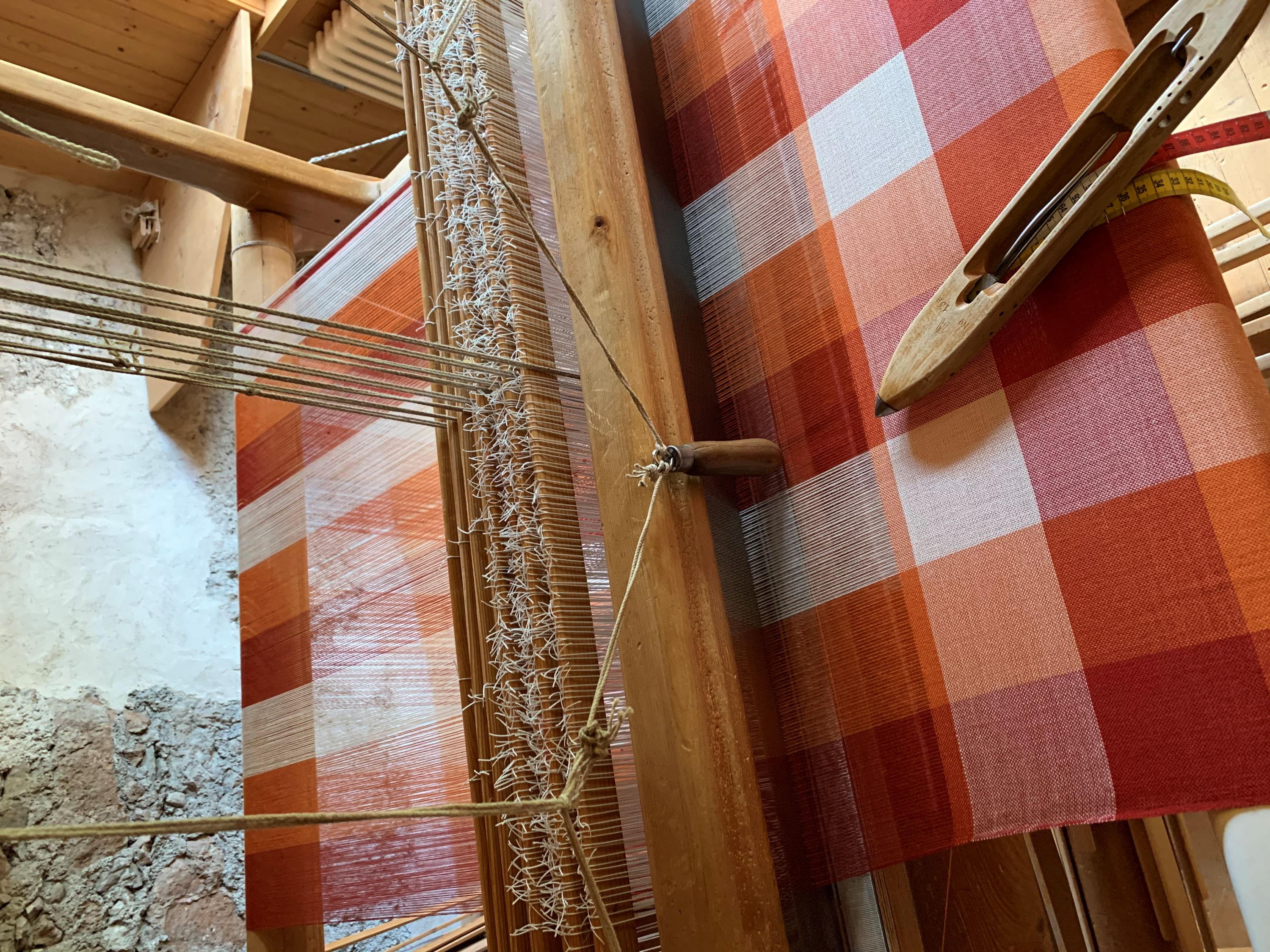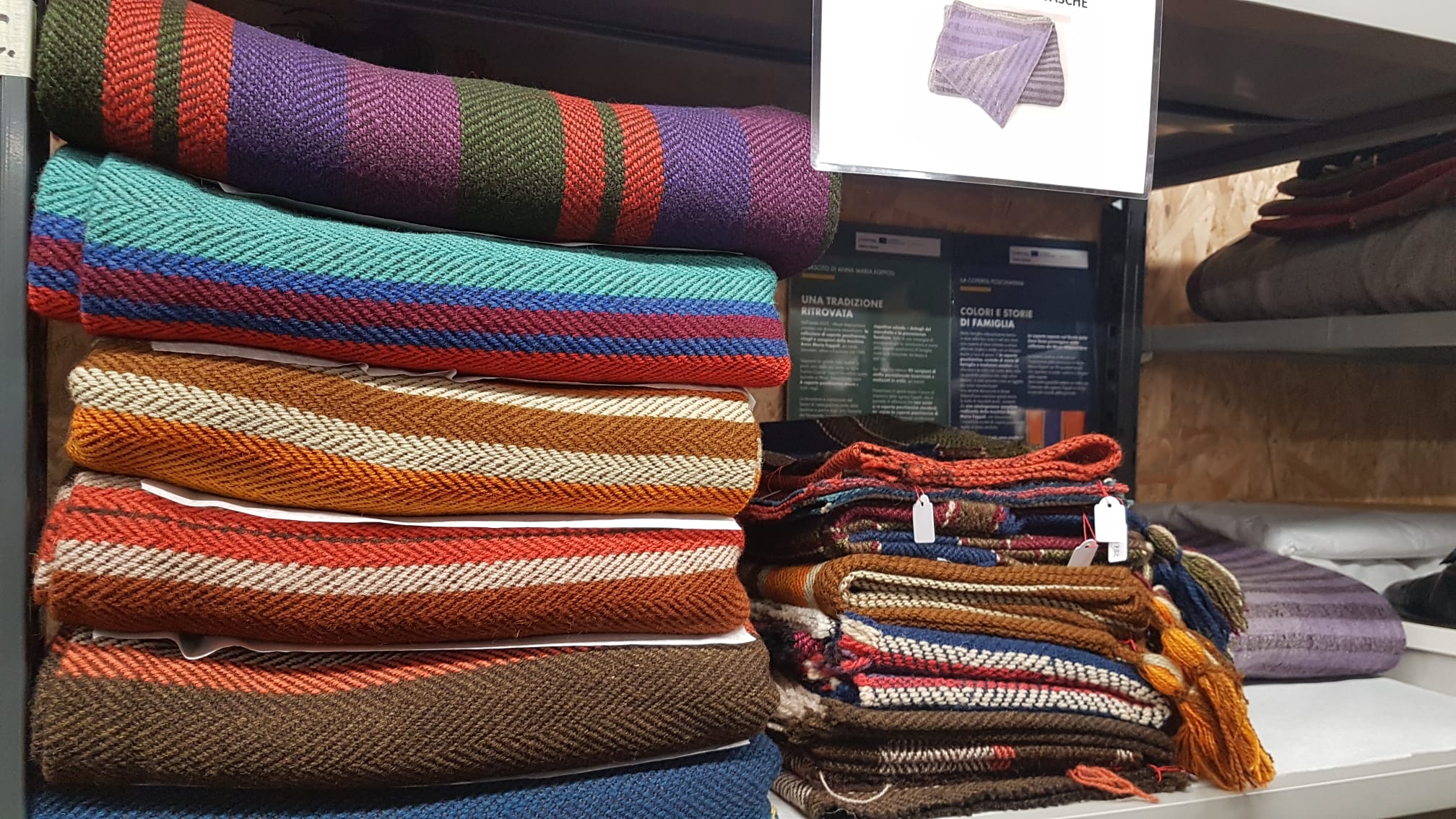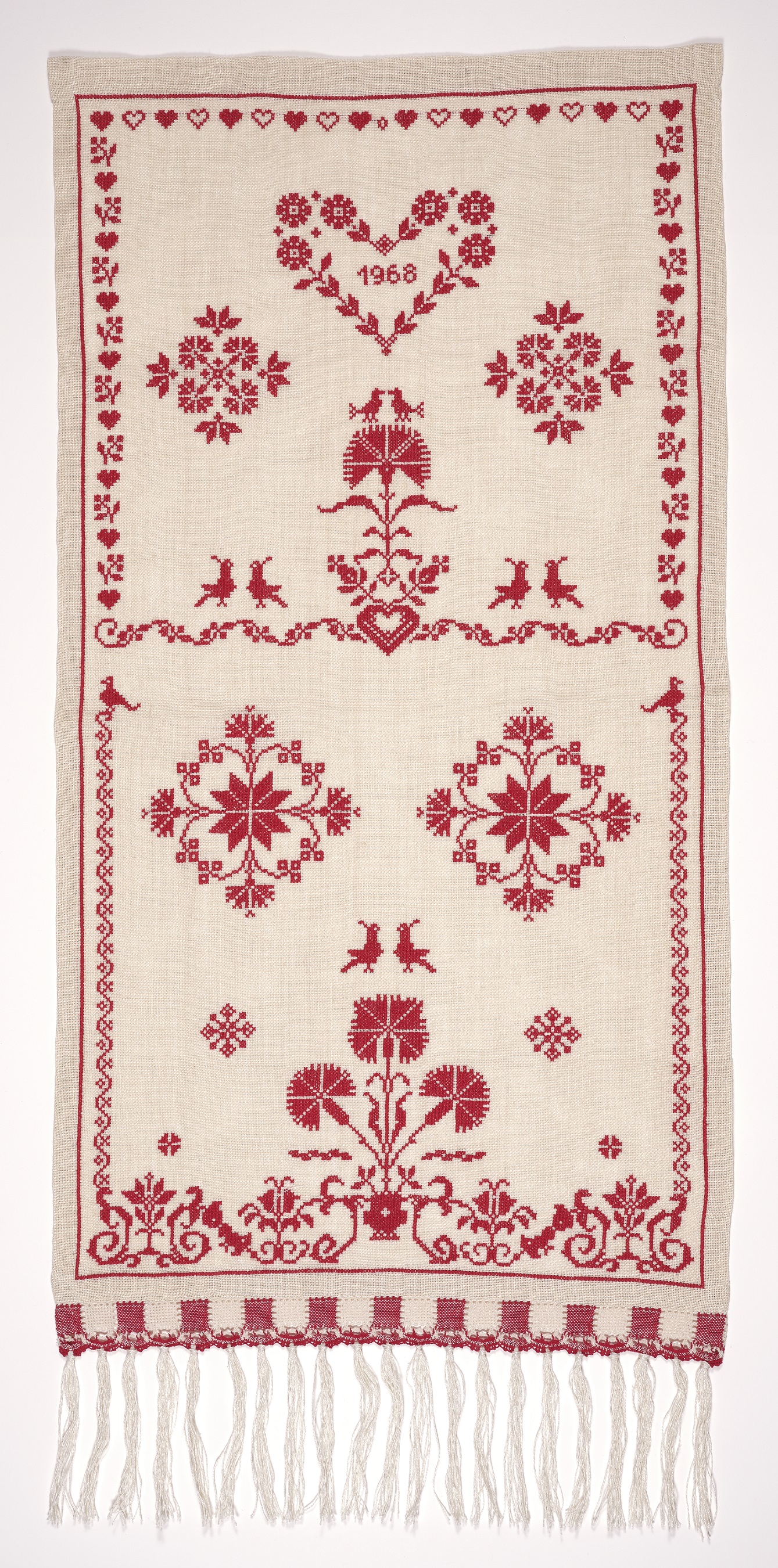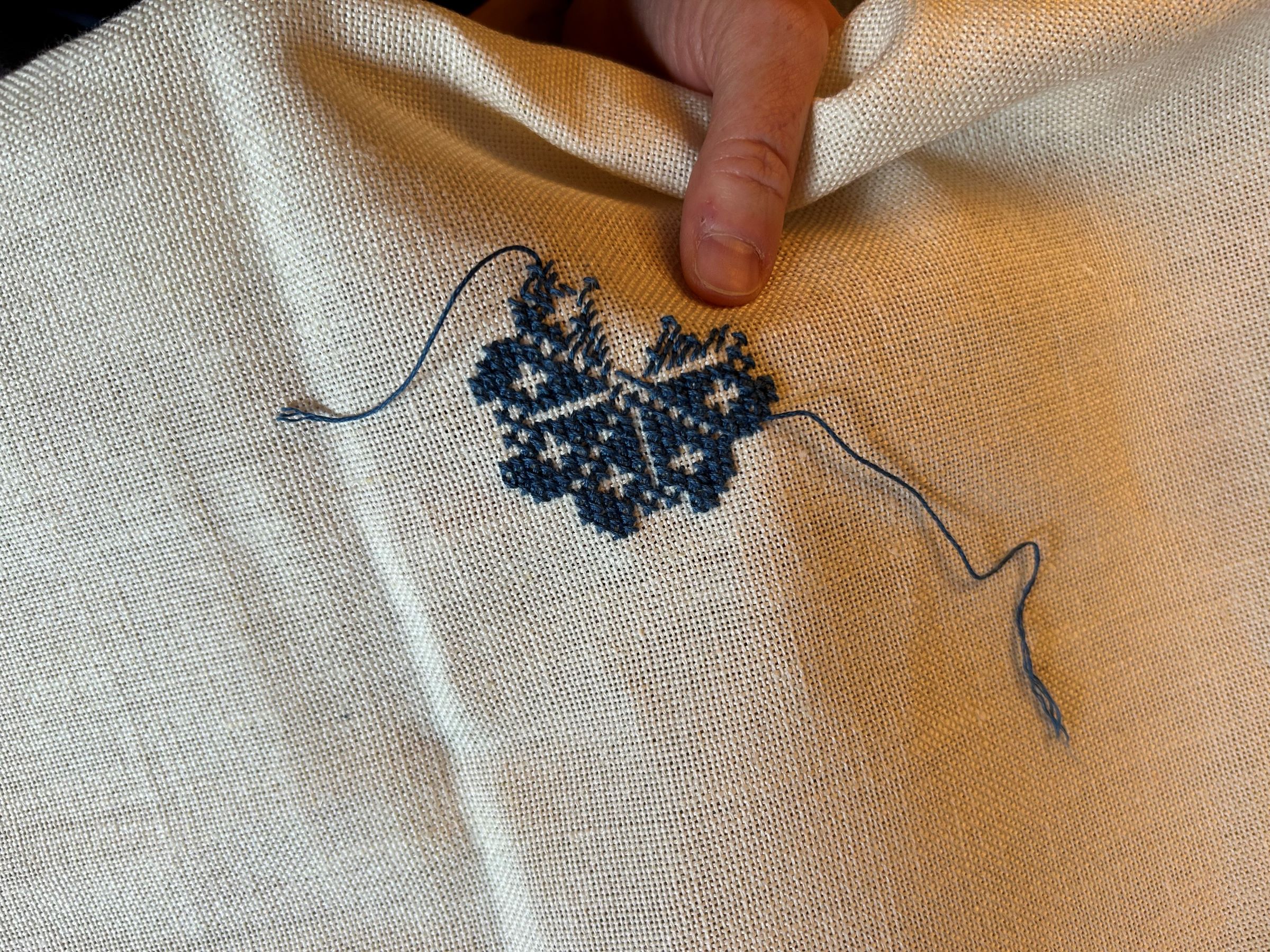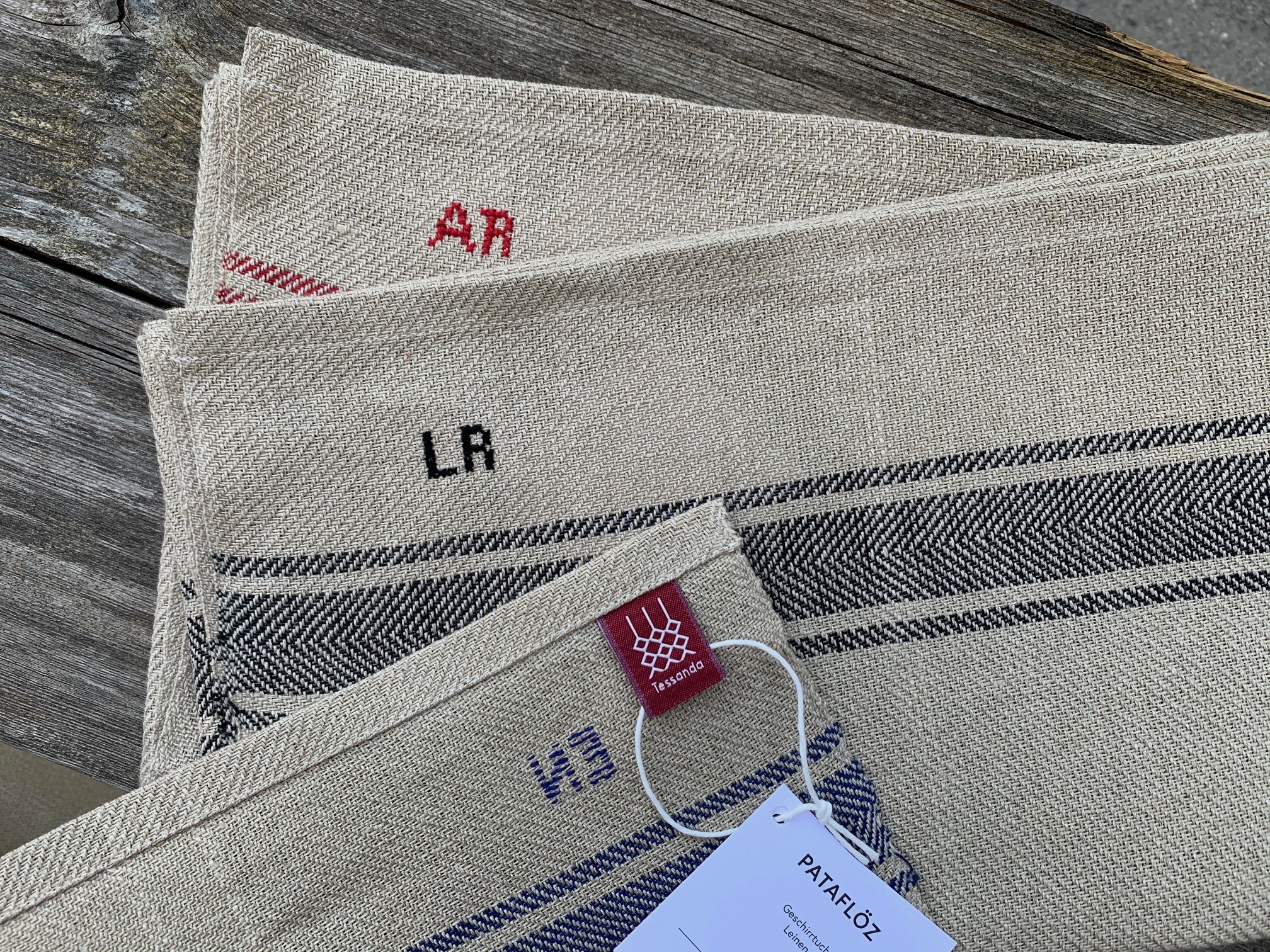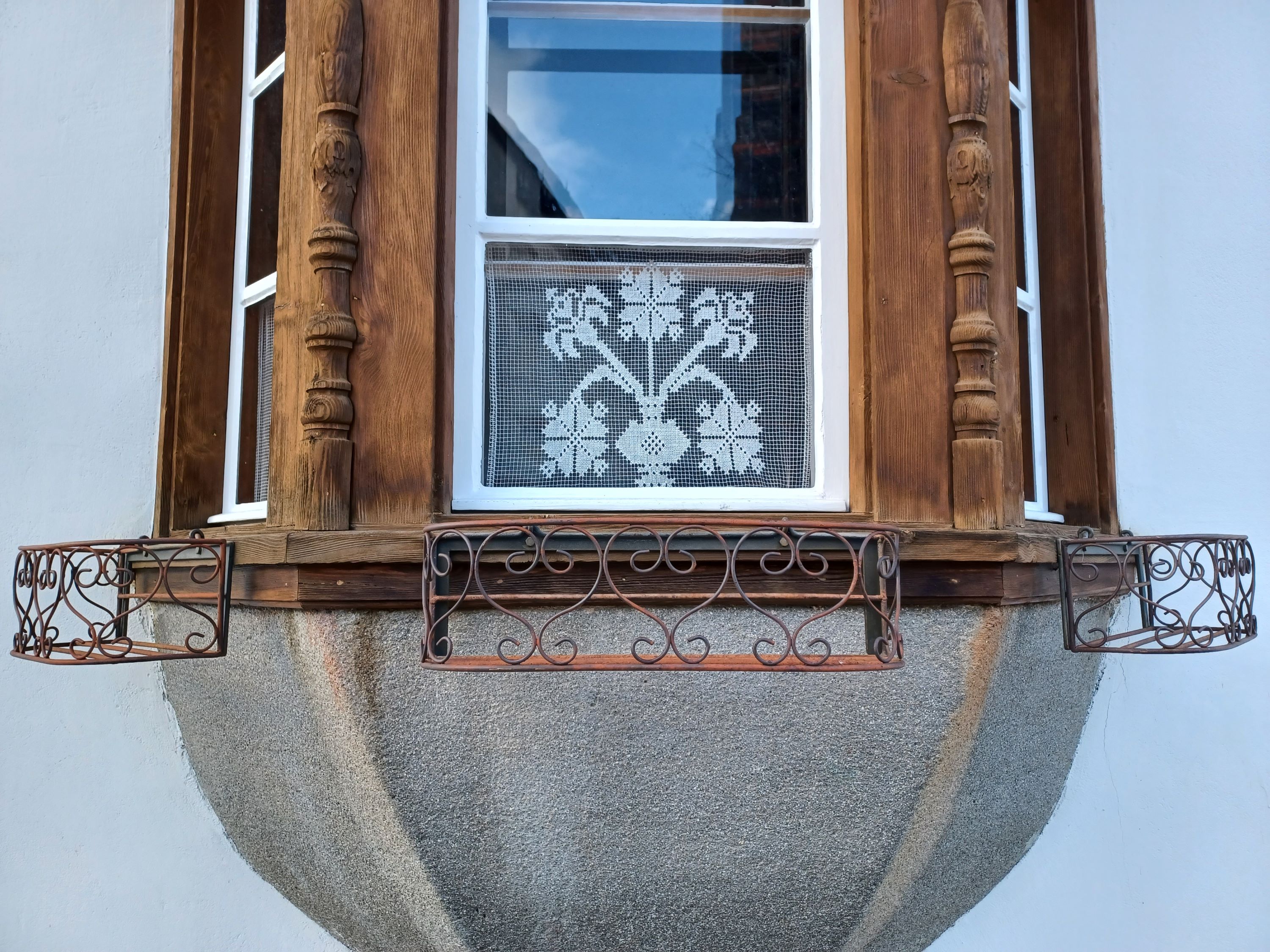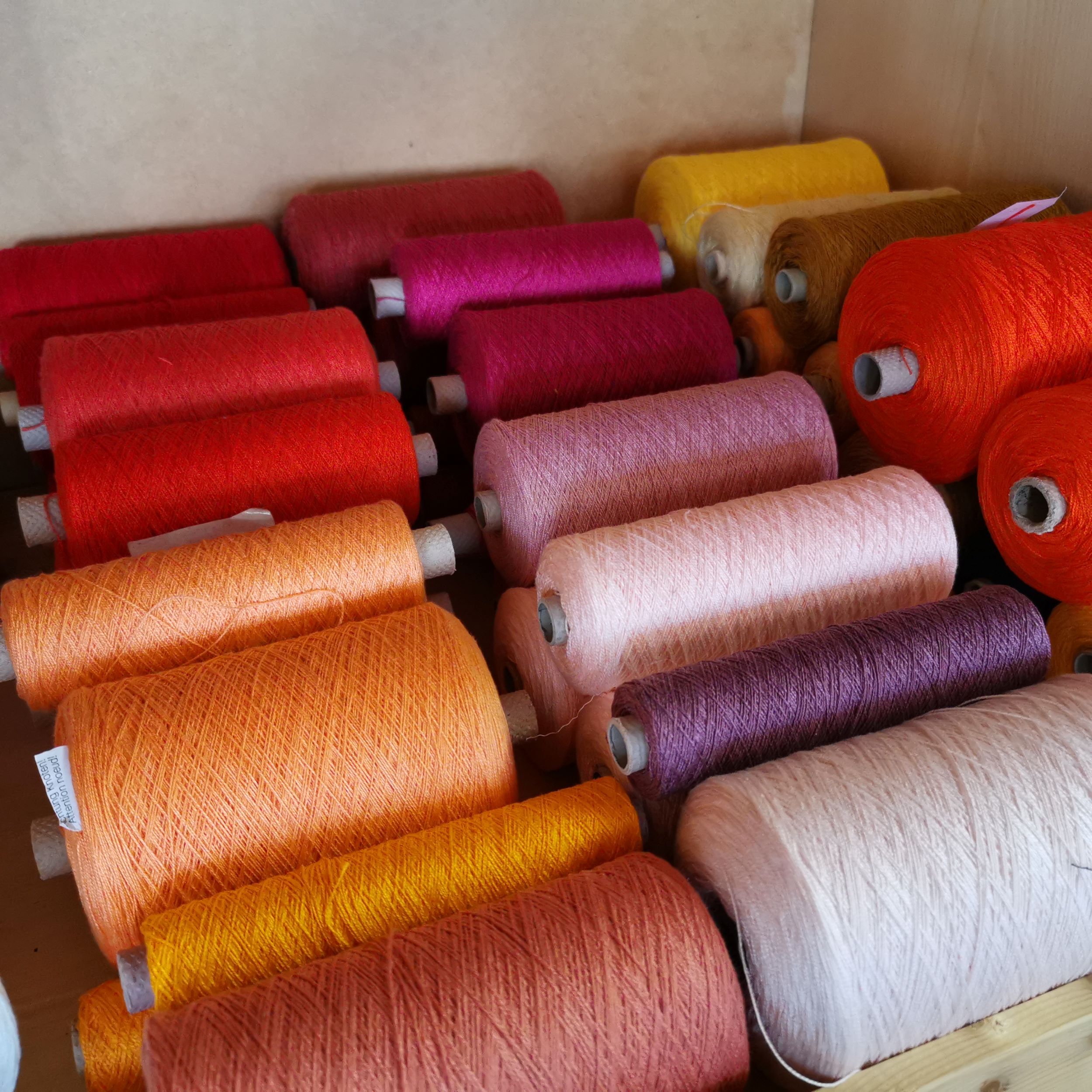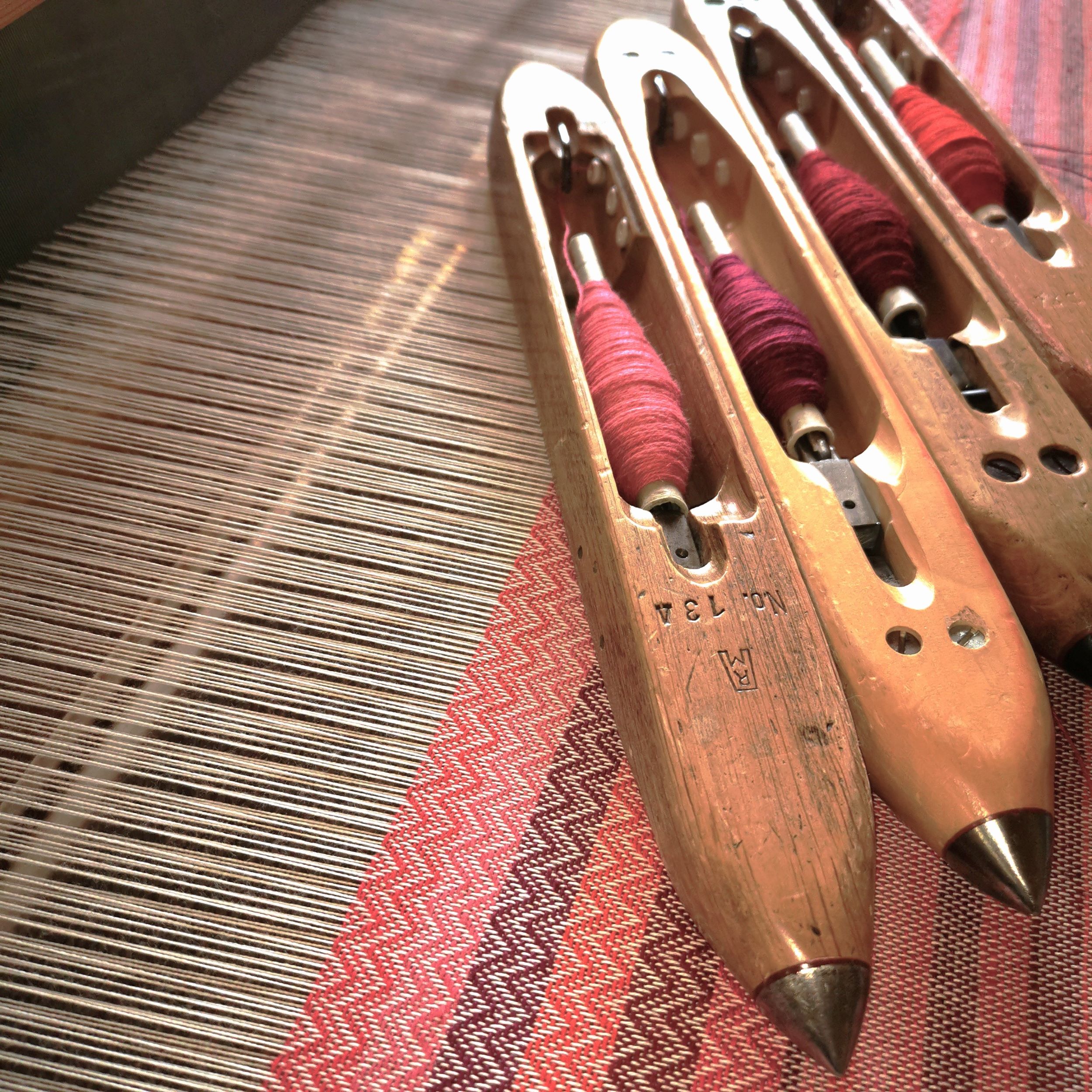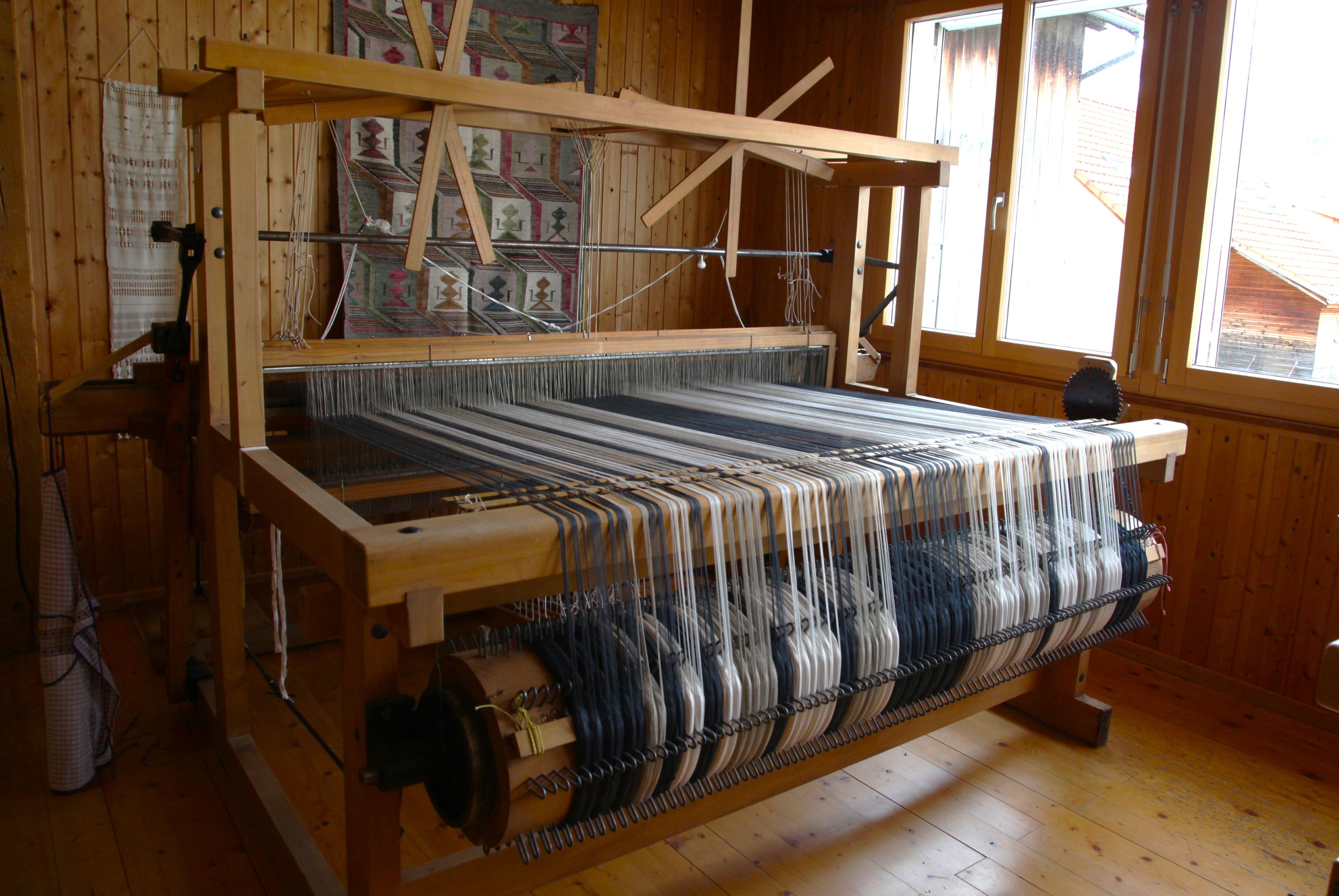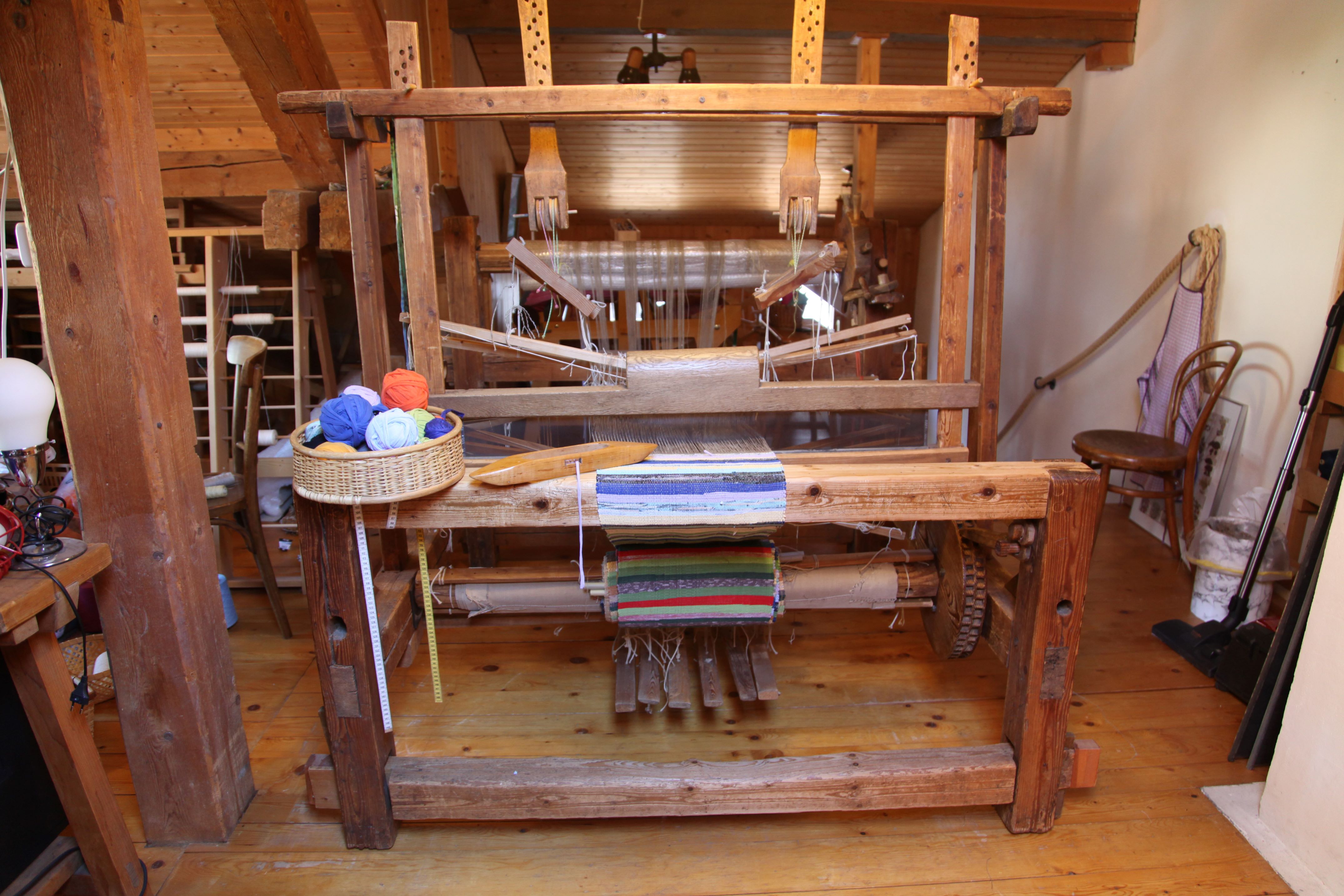Textile handicrafts have developed their own distinctive characteristics in Graubünden. Tessanda Val Müstair is one of the last professional hand weaving mills in Switzerland dedicated to the preservation of this ancient craft. The mill, which employs 18 female staff members and regularly trains textile designers, processes natural fibres such as linen, cotton, wool, silk and hemp to produce exclusive, high-quality products for kitchens, bathrooms and living spaces as well as other accessories. Weaving studios also exist in other valleys of Graubünden, where individual weavers or weaving groups weave primarily for their own enjoyment. Some locations offer courses. Around sixty people belong to the Graubünden chapter of the Textilforum association, which meets up to exchange knowledge every year.
Cross-stitch from Graubünden is known beyond the borders of the canton. The method is practiced by traditional costume tailors and hobby embroiderers. Traditionally, natural linen fabric serves as the embroidery base and is also used for embroidery thread in dusty rose, red or blue. A perfect reverse side, with each individual thread running in the same direction, characterizes the Graubünden cross-stitch technique of today. Common motifs include sprouting hearts, stars, rosettes and tendrils with flowers or leaves. The “Bündner Nelke” is one such typical pattern. Numerous books have been published containing patterns for this uniquely Swiss style of cross-stitch. These traditional motifs continue to be developed and live on in modern textile designs.


